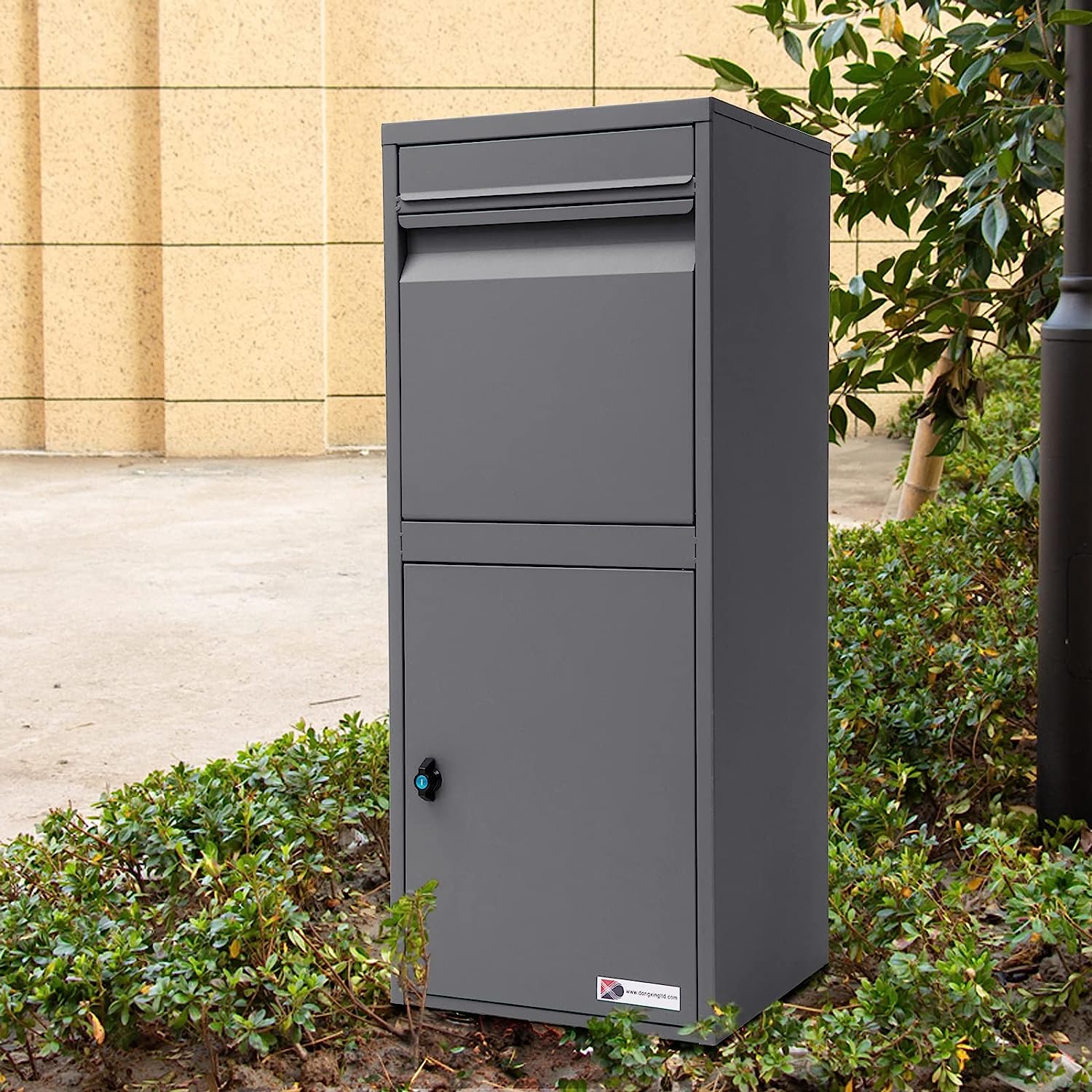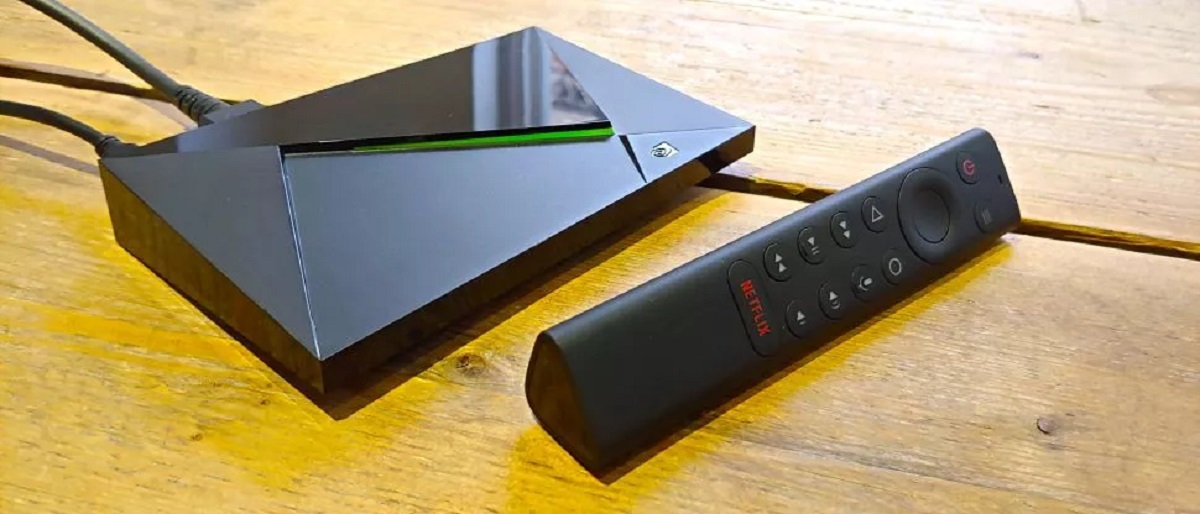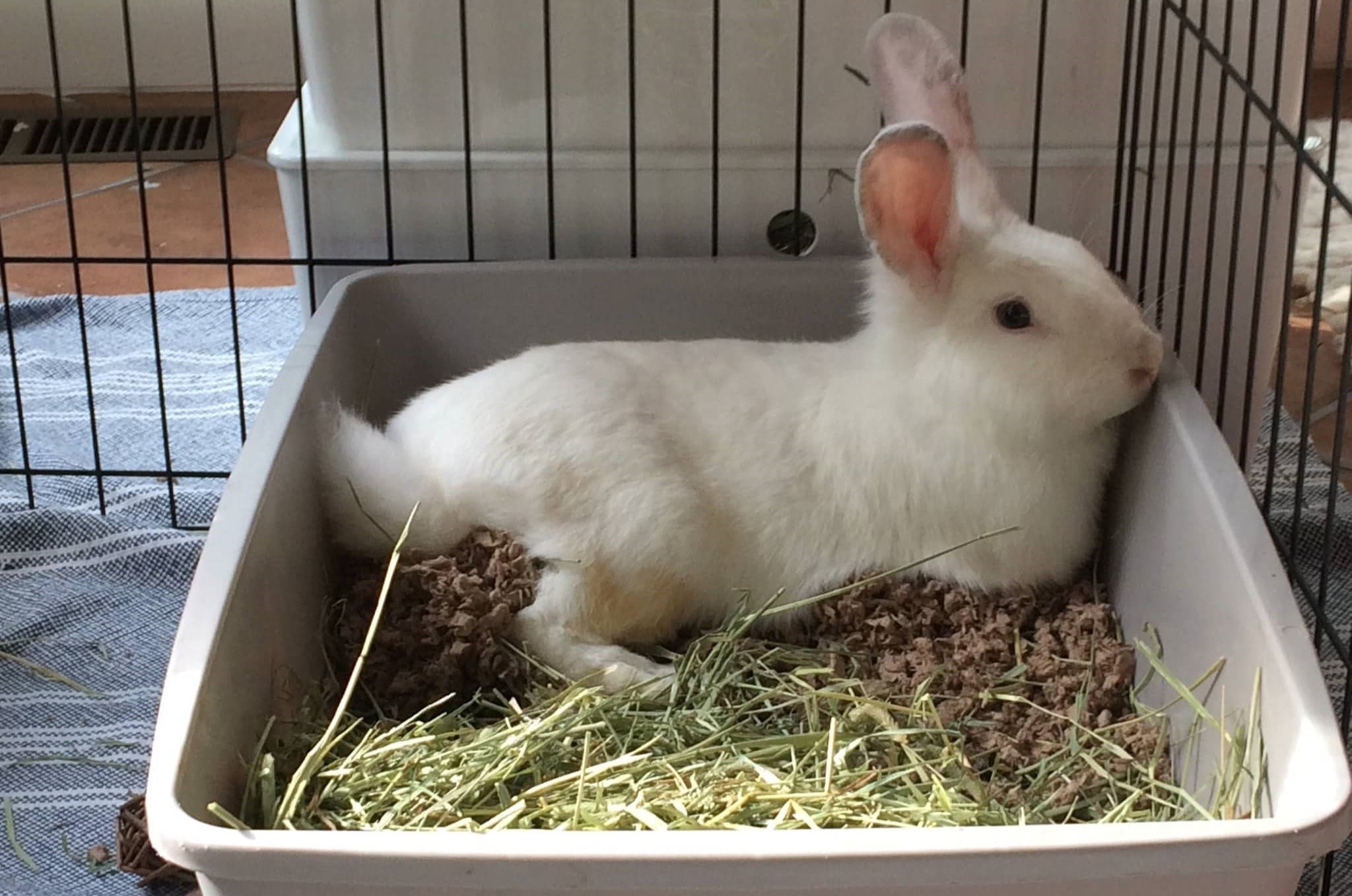

Articles
What To Do With Boxes
Modified: August 30, 2024
Looking for storage ideas for your boxes? Discover creative solutions and practical tips to maximize space and organize your belongings efficiently.
(Many of the links in this article redirect to a specific reviewed product. Your purchase of these products through affiliate links helps to generate commission for Storables.com, at no extra cost. Learn more)
Introduction
So, you have a pile of boxes lying around and you’re wondering what to do with them? Well, you’re in luck! There are plenty of creative and practical ways to make use of those boxes instead of just tossing them in the recycling bin. In this article, we’ll explore various options for repurposing, donating, selling, upcycling, or storing your boxes for future use. Whether you’re an eco-conscious individual or simply someone looking to declutter, these ideas will help you find a new purpose for those cardboard treasures.
Boxes are versatile objects that can be transformed into useful items with a little bit of ingenuity. Not only will you be reducing waste, but you’ll also add a touch of creativity to your daily life. So, let’s dive in and discover the endless possibilities that await those simple cardboard boxes!
Key Takeaways:
- Give your boxes a new lease on life by recycling, repurposing, donating, selling, upcycling, or storing them for future use. Unleash your creativity and make a positive impact on the environment.
- Transform ordinary boxes into extraordinary creations through upcycling. From decorative storage bins to DIY desk organizers, let your imagination run wild and add a personal touch to your living space.
Read more: What Do You Need In A Tool Box
Step 1: Recycling
When it comes to dealing with boxes, recycling is often the most straightforward and responsible option. Cardboard is highly recyclable, which means you can help reduce the demand for new materials by giving your boxes a new lease on life.
To recycle your boxes, start by breaking them down into flat pieces. Remove any tape, labels, or stickers, as these can interfere with the recycling process. If the boxes are soiled or contaminated, you may need to dispose of them as regular trash instead.
Next, find a local recycling center or check with your municipality to see if they offer curbside cardboard recycling. Many communities have dedicated bins or collection days for cardboard recycling. Make sure to follow any guidelines provided, such as bundling or flattening the boxes properly.
Recycling your boxes not only helps conserve resources and reduce landfill waste, but it also supports the circular economy. The recycled cardboard can be processed into new boxes or other paper products, minimizing the need to extract raw materials from forests.
By choosing to recycle your boxes, you are making a positive impact on the environment and contributing to a more sustainable future. So, gather up those boxes and give them a second life through the recycling process!
Step 2: Repurposing
If you’re feeling creative and want to give your boxes a new purpose, repurposing is the way to go. Instead of letting them gather dust in storage or end up in the recycling bin, you can transform them into functional and unique items for your home or workspace.
Here are some ideas for repurposing your boxes:
- Storage containers: Cut off the top flaps of the boxes and use them to store items like toys, books, or seasonal decorations. You can even decorate the boxes with wrapping paper or fabric to make them visually appealing.
- Drawer organizers: Cut the boxes to fit inside drawers and create compartments for organizing small items like stationery, jewelry, or accessories. Customize the compartments based on your needs.
- Shelving units: Stack sturdy boxes in different sizes to create DIY shelves. Paint or cover them with contact paper to match your decor and display books, plants, or decorative items.
- Magazine holders: Cut one side of a box at an angle to create a slanted magazine holder. You can decorate it with colorful paper or fabric to add a personal touch.
- Cat playhouses: If you have feline friends, cut openings in the boxes to create tunnels or hiding spots for them to explore. They’ll love the new play area, and you’ll love the entertainment.
- Shipping supplies: If you frequently ship items, use your boxes as shipping supplies (just make sure to remove any old labels or markings). Cut them into flat sheets to use as protective padding or wrap items securely.
These are just a few examples of how you can repurpose your boxes. The possibilities are endless, and only limited by your imagination. So, get creative and give those boxes a new life by turning them into something practical and unique!
Step 3: Donating
If your boxes are in good condition and you don’t have a use for them, consider donating them to someone in need. Donating your boxes not only helps declutter your space but also assists organizations and individuals who can benefit from the extra storage or packaging materials.
Here are a few options for donating your boxes:
- Local organizations: Contact local shelters, community centers, or schools to see if they could use boxes for storage or moving purposes. Many organizations are grateful for any donations that can help them meet their needs.
- Online platforms: Utilize online platforms such as Freecycle, Craigslist, or local Facebook groups to offer your boxes to people in your community. Mention the size and quantity of the boxes in your listing to attract interested individuals.
- Art and craft schools: Reach out to art or craft schools in your area. Many of these institutions would appreciate boxes for their students to use in projects or for organizing art supplies.
- Food banks: Some food banks may accept sturdy boxes for packaging and distributing food to individuals and families in need. Check with your local food bank to see if they have any specific guidelines for box donations.
- Moving companies: Contact local moving companies to inquire if they could use boxes as packing materials for their clients. They may be interested in taking them off your hands and putting them to good use.
By donating your boxes, you not only help those in need but also contribute to reducing waste by ensuring that the boxes continue to serve a purpose. It’s a win-win situation for everyone involved.
Remember to inspect your boxes and make sure they are clean and in good condition before donating them. This ensures that the recipients can make the most out of your generous contribution.
So, spread the love and donate your boxes to those who can benefit from them. You’ll make a difference in someone’s life and do your part in reducing waste.
When dealing with boxes, it’s helpful to break them down and store them flat to save space. This also makes it easier to recycle or repurpose them in the future.
Step 4: Selling
If you’re looking to make some extra cash and have boxes that are in good condition, selling them can be a viable option. There are various avenues for selling your boxes, both online and offline, and you can connect with individuals or businesses who are in need of packaging materials. Here are some ideas to help you get started:
- Online marketplaces: Platforms like eBay, Amazon, or Craigslist allow you to sell items locally or nationwide. Create a listing for your boxes, specifying their size, quantity, and condition. Include clear photos and a compelling description to attract potential buyers. Be transparent about any shipping costs or pick-up arrangements.
- Social media: Utilize social media platforms like Facebook Marketplace or community buy/sell groups to reach a wider audience. Post photos of your boxes along with relevant details and pricing information. By selling locally, you may have the advantage of arranging easy pick-ups or deliveries.
- Box reselling websites: Some websites specialize in connecting those who have boxes with buyers who need them. Websites like BoxCycle or UsedCardboardBoxes.com provide a platform for sellers to list their boxes and connect with interested buyers. Research these platforms to see if they align with your selling goals.
- Local businesses: Reach out to local businesses, such as moving companies, storage facilities, or retailers, and inquire if they would be interested in purchasing your boxes. These businesses often require a steady supply of packaging materials and may be willing to pay for them. Make sure to negotiate a fair price based on the quality and quantity of your boxes.
- Garage sales or flea markets: If you have other items to sell, consider adding your boxes to a garage sale or setting up a booth at a flea market. This way, you can attract potential buyers who are already in the mindset of purchasing second-hand items. Display your boxes neatly and price them competitively.
Remember, when selling your boxes, it’s important to accurately describe their condition and provide clear photos. Communication and transparency with potential buyers are key to a successful transaction.
By selling your boxes, not only can you earn some extra money, but you also ensure that they find a new home where they will be put to use, rather than ending up in a landfill.
So, if you’re looking to declutter and make a profit, consider selling your boxes through one of these channels. It’s a win-win situation for both you and the buyers!
Read more: What Kind Of Litter Box Do Cats Prefer
Step 5: Upcycling
If you’re feeling particularly creative and want to add a unique touch to your home decor or personal style, upcycling your boxes is a great option. Upcycling involves transforming ordinary objects, like your boxes, into something of higher value or aesthetic appeal. Here are some inspiring ideas to help you upcycle your boxes:
- Decorative storage bins: Cover your boxes with fabric, wallpaper, or contact paper to create stylish storage bins. You can use them to organize your belongings while adding a pop of color or pattern to your space.
- DIY desk organizers: Cut and assemble your boxes to create custom desk organizers to keep your workspace tidy. Design compartments for pens, paperclips, and other office supplies, and decorate them to match your personal style.
- Jewelry or accessory organizer: Take a small box and modify it into a jewelry or accessory organizer using dividers or compartments. Add hooks or small containers to hold earrings, necklaces, and other accessories.
- Children’s play items: Let your imagination run wild and turn your boxes into playtime wonders. Build a cardboard castle, spaceship, or dollhouse for your children to enjoy. Decorate with paint, markers, or stickers to bring their creations to life.
- Gift boxes: Transform your boxes into unique and personalized gift boxes by decorating them with ribbon, wrapping paper, or artwork. Not only will the recipient appreciate the thoughtfulness of the gift inside, but they’ll also love the presentation.
- Pet beds: Cut a larger box to size, add a soft cushion or blanket, and create a cozy sleeping spot for your furry friend. They’ll appreciate having their own little haven and you’ll enjoy repurposing your box.
These are just a few examples of how you can upcycle your boxes. Don’t be afraid to experiment and let your creativity shine. The possibilities are endless, and you’ll be amazed at what you can create with a little imagination and some basic crafting supplies.
By upcycling your boxes, you not only give them a new purpose but also reduce waste by extending their lifespan. It’s a fun and environmentally-friendly way to add a personal touch to your living space.
So, grab your art supplies, put on your crafting hat, and start upcycling those boxes into something extraordinary.
Step 6: Storing for Future Use
If you find yourself in a situation where you don’t need to recycle, repurpose, donate, sell, or upcycle your boxes right away, storing them for future use is a practical option. By properly storing your boxes, you can ensure they remain in good condition and ready to serve your needs whenever the time comes.
Here are some tips for storing your boxes:
- Organize and label: Sort your boxes based on size and purpose. This will make it easier to locate specific boxes when you need them. Consider labeling each box so that you can quickly identify its contents.
- Keep them dry: Moisture can cause boxes to deteriorate or become moldy. Store your boxes in a dry area, away from any potential water damage. If necessary, consider using moisture-absorbing packets or placing your boxes on shelves or pallets to keep them off the ground.
- Stack properly: When stacking your boxes, make sure to place heavier and larger boxes on the bottom and lighter or smaller boxes on top. This will prevent any crushing or damage to the boxes at the bottom of the stack.
- Protect from pests: To keep pests such as insects or rodents away, seal your boxes with tape and consider using pest deterrents like mothballs or cedar chips. If storing in a garage or basement, ensure these areas are properly sealed to prevent unwanted visitors.
- Consider climate-controlled storage: If you have valuable, delicate, or temperature-sensitive items stored in your boxes, consider renting a climate-controlled storage unit. This will help preserve the condition of your boxes and their contents over an extended period.
- Regularly inspect your stored boxes: Periodically check on your stored boxes to ensure they are still in good condition. Look for signs of damage, pests, or any other issues that might affect the usability of the boxes. Replace any damaged boxes promptly.
By storing your boxes properly, you’ll have them readily available when you need extra storage, moving supplies, or packaging materials. This can save you time and money in the future by eliminating the need to purchase new boxes.
Remember, it’s essential to find a balance between storing boxes for future use and avoiding unnecessary clutter. Regularly assess your stored boxes and determine if they are still needed or if it’s time to let go and recycle or repurpose them.
So, find a designated storage area and start organizing those boxes for future use. You’ll appreciate having them on hand when the need arises.
Conclusion
When faced with a surplus of boxes, it’s important to consider alternative options beyond simply throwing them away. By recycling, repurposing, donating, selling, upcycling, or storing them for future use, you can maximize their value and minimize waste.
Recycling boxes is an environmentally responsible choice that allows them to be transformed into new products, reducing the demand for raw materials. Repurposing boxes unleashes your creativity and turns them into useful items for storage and organization. Donating boxes to local organizations or online platforms helps those in need while reducing clutter in your space.
Selling your boxes provides the opportunity to earn some extra money while ensuring they find a new home where they’ll be of use. Upcycling takes recycling a step further, turning boxes into unique and personalized creations that add a touch of style to your home or wardrobe. Finally, storing boxes for future use allows you to keep them on hand, ready for when you need extra storage or moving supplies.
By exploring these various options, you can make a positive impact on the environment, support local communities, and unleash your creativity. Each of these steps offers its own benefits, allowing you to choose the method that aligns best with your wants and needs.
Remember, caring for the environment and reducing waste doesn’t have to be a daunting task. It’s about making small, conscious choices in how we handle everyday items like boxes. By considering these six steps, you can make a difference and find new purposes for those seemingly ordinary boxes.
So, whether you’re recycling, repurposing, donating, selling, upcycling, or storing your boxes, remember to think outside the box and let your creativity guide you. Embrace the possibilities, and watch those simple cardboard boxes take on a new life and purpose!
Frequently Asked Questions about What To Do With Boxes
Was this page helpful?
At Storables.com, we guarantee accurate and reliable information. Our content, validated by Expert Board Contributors, is crafted following stringent Editorial Policies. We're committed to providing you with well-researched, expert-backed insights for all your informational needs.















0 thoughts on “What To Do With Boxes”